The Ideal Strains for a Cannabis Bonsai Tree
If you hear the word bonsai, what comes to mind? If you’re anything like me, you probably immediately thought about Japan, China, and the juniper tree. This all makes quite a lot of sense given that the Japanese art of bonsai originated in China as penjing and that the juniper tree is one the most beloved tree species to be cultivated as bonsai. The last thing you’re thinking about right now is probably a cannabis bonsai.
In fact, the only reason you may currently be thinking about weed is because of the name of this article and because I just name-dropped it. In truth, cannabis and bonsai cultivation are two concepts that don’t typically get put together often. But what if I told you weed and bonsai cultivation actually fit together quite harmoniously?
Below, we’ll explore the connections between cannabis and bonsai. I’ll take you on a journey of discovery through the problematic preconceived notions society and the medical community hold about weed, all the way to the absolute best strains of cannabis to use if you are looking to get into bonsai. Yes, there is actually one type of cannabis that works better at being a bonsai than others.
Cannabonsai: A Movement of Tranquility
Cannabonsai is a concept we covered a little over a week ago in a news article. Essentially, the concept is the brainchild of Vancouver local Manuel Oyarce, who had ‘a whole bunch of free seeds.’ To clarify, these were cannabis seeds. Oyarce explained that he started experimenting with seed germination and development and ended up with a ‘cool-looking plant.’
He also points out in numerous interviews that he never intended to become the defacto posterchild for cannabis-infused explorations into bonsai cultivation and merely started growing the cannabonsais for himself. His story really only began to take the world by storm when he posted a picture of his newly developed cannabosai to the popular social media platform and generator of the world’s favorite memes and viral comments, Reddit. From the moment he hit post, the internet was obsessed with his creation.
To say he went viral would be an understatement for the effect his one picture has had on the global internet. Needless to say, he ended up on the front page of Reddit, and his follower count grew exponentially from 200 to 10,000 in the span of a week.
Oyarce was also inundated with questions about his creation. People, understandably, wanted to know how on earth they could turn their cannabis seedlings into bonsais. I understand the core appeal this idea has to any hardcore stoner. Tell me a better response to being caught with a grow room full of dope than ‘They’re just bonsai. I grow them as an interpretation of the quest for tranquility. I’m not high. I swear.’ Go ahead, propose a better comeback; I’ll wait.
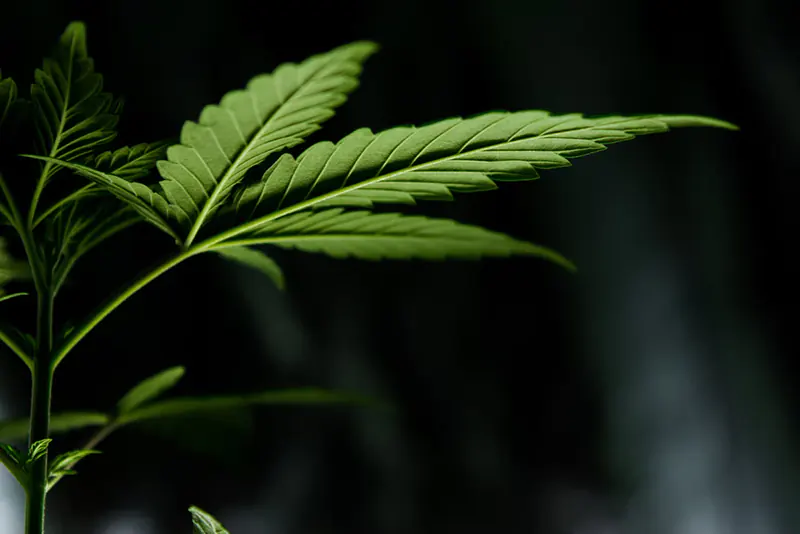
Yield of Cannabonsai
To that point, however, according to Oyarce, you don’t get a terribly high yield from cannabonsais. Because you manipulate their growth to facilitate a smaller size, Oyarce says you only get around 2-3 grams of premium Maui-Wowie per miniature tree. Nonetheless, it’s definitely something stoners the world over have adopted as somewhat of a new hobby.
Oyarce initially wanted to set up an FAQ-type document to release on Amazon explaining the particulars of cannabonsai cultivation. But at the end of the day, the project was refocused into a fully-fledged book called Cannabonsai: A Beginner’s Guide.
After hearing about Manuel Oyarce or reading his excellent book, you’d be forgiven for thinking that it was an unintentional seed choice that led to the world thinking about bonsai and cannabis in a new light. But what if the connection between these two practices is connected more by the effects they have on humanity and the human internal systems than just one man’s horticultural explorations?
I firmly believe that cannabis, in many ways, was meant to be a bonsai and that the ancient art of bonsai cultivation has been tied to cannabis since its inception simply due to the way it makes humans feel. Both practices, in many cases, are an exploration of the human psyche into tranquility and peace. We could take a page from a stoner’s book and say that both practices are a way to either physically or spiritually get cloudy with a chance of munchies and have a chance to take a step back from life and explore the true meaning of being at peace with oneself.

What is Cannabis?
To truly be able to discuss the relationship I believe exists intrinsically between cannabis and bonsai cultivation, we need to make sure we have a good understanding of what exactly cannabis is. Cannabis is a genus of flowering plants belonging to the family Cannabaceae. I get particularly excited when I get to delve into terms like genus and species because taxonomy is a low-key passion, as you’ve no doubt seen from my other articles, like my deep and detailed exploration into taxonomy within the plant kingdom.
Studying the genus’ place within the taxonomic hierarchy, you really get to understand that cannabis is so much more than the tagline in awful ill-researched commercials about ‘drug use.’ Instead, you realize that cannabis is, at its core, nothing but a photosynthesizing flower-producing plant, much like the bougainvilleas and hibiscus that I write about so fondly.
In the grander scheme of plant classification, there are three main species of cannabis; sativa, indica, and ruderalis. If you’re what popular culture has come to term a stoner, you’ll likely have a deeper understanding of what exactly sativa and indica mean as it basically dictates what kind of ‘trip’ results from your buds. For the purpose of this section, though, both sativa and indica are merely species of the cannabis genus, along with ruderalis.
There are distinct differences between sativa, indica, and ruderalis, even though some scientists believe the latter two to be subspecies of C. sativa. The most easily recognizable difference between the three species is how they look and how they grow.
Let’s Look at These differences
Sativa is a far taller species overall than the other two, reaching up to six meters in some instances. Sativa is also instantly recognizable by its far narrower leaves and its relatively average appearance.
Indica has broader leaves and tends to stay a relatively short, stout plant. Indica can also be sussed out by its slightly more textured and marbled leaves. The broader nature of the leaves of your average C. indica plant also makes the plant look a lot bushier and fuller than a sativa.
Ruderalis is the strangest looking of all the different types of cannabis. It’s typically even shorter than the average indica, measuring about 4 feet from top to toe. Plants of the ruderalis species also tend to have a slightly different configuration where the leaves are concerned. The leaves are broader than those of a sativa and indica, and have a little more texture.
The typical uses of the three species of cannabis also set them apart. While sativa is generally the species that produces the most THC, the fun compound that results in what is commonly termed as a head rush, indica strains are primarily used in medicine due to their higher yield of CBD. Ruderalis is typically the species used most for textiles, and you shouldn’t really expect to get any kind of significant-high from it.
Strains from all three main species of cannabis can be used for bonsai cultivation, depending on what your ideal outcome is. If you want to be able to harvest that 2-3 grams of premium grade kush we mentioned earlier, you’ll want to use a sativa. This will also be the case if you want your cannabonsai to have the typical narrow leaves that come up when you head to the image results of a cannabis Google search.
If you want a typically bushier plant and don’t care so much about the harvestables, you could opt for indica. If you want a smaller cannabonsai without putting in much effort and don’t mind particularly thick leaves, ruderalis is your species.

The Best Strains for Cannabis Bonsai
Now that we’ve discussed the cannabonsais, it’s time to get into the list of the best, most beneficial cannabis strains for bonsai. We’re not ranking these in any particular order. We’re simply giving you our 10 favorite strains of cannabis bonsai in terms of how they look and the effects of the buds harvestable from them.
There’s such a diverse variety of plants and buds out there, and if you’re in a region where growing cannabis at home or for personal use is legal, it would be worth it to look into as many different strains as possible. These marijuana bonsai trees are impossibly pretty, and they almost look alien compared to the trees we usually write about in the Bonsai Alchemist.
Maui-Wowie
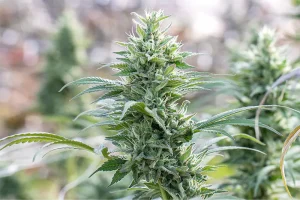
Maui-Wowie, sometimes written as Maui Waui or Mowie Wowie, is one of the classic sativa strains of cannabis. Bred from a cross between the Hawaiian and another unknown strain, this beautiful sativa has a tropical mouthfeel and will most likely leave you feeling like you’re on a Hawaiian beach. This strain prefers tropical climates and loads of sun, with preferably nutrient-rich soil.
As far as the specific effects of this strain, if grown for recreational use, you can expect the classic high-energy euphoria that sativas are known for. You can also expect a really bright, vibrant pineapple flavor and overtones of sweetness. If taken in small doses, you’ll feel light and almost weightless, able to imagine yourself drifting off to the tropical shores from which this plant originates. Maui-Wowie is an excellent stimulant for creativity and motivation.
In terms of visual appeal for use as a bonsai, you’re looking at the classic slender leaves of a sativa plant, with muted, almost white, and fuzzy-looking buds. Maui-Wowie would be perfect for any of the tall, confident bonsai styles with time and a little effort.
Durban Poison
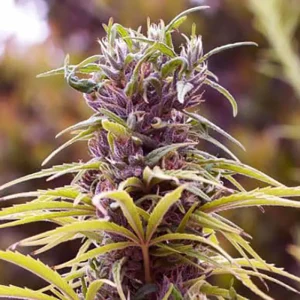
This is another incredibly popular sativa strain, this time hailing from the beautiful coastline of Durban, South Africa. Part of Durban Poison’s popularity stems from its sweet, uplifting, and energetic nature. This is the perfect strain for a productive day, but a little too much of this bud could leave you glued to your couch for hours.
Durban Poison should give you a shot of energy and intense motivation if taken in moderate quantities and generally leaves you feeling ready to take on whatever your day has in store for you. Durban Poison has two other closely related varieties; Cherry Durban Poison and a beautiful vanilla strain.
This is definitely one of the prettier cannabis strains, with its light purple accents and slender light green leaves. Durban Poison thrives in the African sun and, therefore, would be perfectly suited to a pot in a sunny spot in your garden. This is definitely a showpiece strain and would look stunning cultivated as a cascade style bonsai.
Green Crack
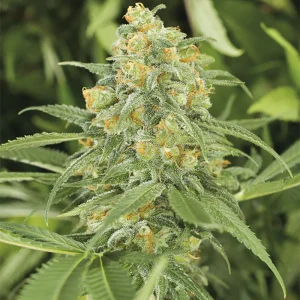
Also known as Green Cush and Mango Crack, this pretty plant is one of the more potent strains of sativa. Green Crack is created by breeding Skunk #1 with an indica of unknown name and origin. Green Crack provides a sharp, energetic rush and is perfect for when you need a big boost.
Other effects of Green Crack include an intensely invigorating head-high or mental buzz that is sure to keep you going throughout the day. If used for recreation, it has a tangy, fruity mango flavor and often helps users fight fatigue, depression, and the effects of stress.
This is another certain statement piece, with its snowy buds with bright yellow flowers. Any kind of attention-drawing bonsai style would thus be a perfect fit for Green Crack. I tend to favor the more dramatic cascade or semi-cascade styles for plants as beautiful and eye-catching as this.
Super Silver Haze

This is one of the many popular strains bred by Green House Seeds. Super Silver Haze has won many awards, including first prize at the High Times Cannabis Cup for three years running in 1997, 1998, and 1999. This masterpiece of cannabis breeding is created by crossing three strains; Haze, Northern Lights, and Skunk.
Super Silver Haze is known for its energetic effects, often leaving users with a long-lasting body high similar to what indicas bring. This is, therefore, the perfect strain for high-stress levels and people who suffer from nausea or a lack of appetite.
One look at Super Silver Haze and its name will make perfect sense. The plant is tall, domineering, with almost completely silver buds. You might find a small yellow flower here and there, but this plant is known for its striking silver appearance. You might try an informal upright style for this one. The intense silver buds and the dark green leaves with hints of deep purple at the inner extremities would make for an excellent cascade as well, though.
Sour Diesel

This strain has numerous colloquial names, including Sour D and Sour Deez. Sour Diesel rose to popularity in the early 90s and has been legendary in the eyes of enthusiasts and stoners ever since. This is a particularly distinct strain. While others may have a sweet smell or aromatic scent, Sour Diesel quite aptly smells like diesel. This is also a notably potent strain and has a noticeably pungent flavor profile.
As with many sativas, Sour Diesel is known for helping with symptoms of stress, depression, and chronic pain. Sour Diesel enthusiasts say that this strain performs best in dry outdoor climates and doesn’t require excessive watering or terribly rich soil.
In terms of aesthetics, this is a fairly muted plant. Its lack of brilliant colors or vibrant markings makes it a good choice for bonsai styles that evoke strength and resilience. In my opinion, Sour Diesel makes an incredible formal upright and double trunk bonsai.
Tangie
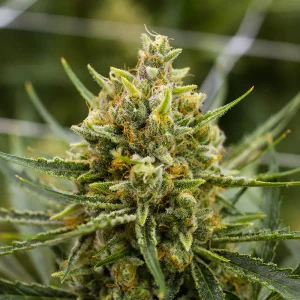
This next one is a little piece of nostalgia, in all honesty. Tangerine Dream was a strain that was incredibly sought-after in the 1990s. Somehow, the strain became increasingly rare and hard to find, but demand for it never abated. Enter Tangie, a remake of sorts of Tangerine Dream. This strain is one of the most popular strains in Amsterdam, and its popularity is spreading like a global game of puff puff pass.
As suggested by the name, Tangie has a similar aroma and flavor profile to tangerine, and you can tell instantly that it was bred with a citrus strain. Tangie is created by breeding California Orange and Skunk #1.
In visual terms, Tangie is another really beautiful plant that looks a lot like Super Silver Haze. Because it is such an intricate plant, I’d yet again suggest a more sculptural bonsai style for Tangie.
Pink Cush

Pink Cush is easily one of the most stunning cannabis plants you’ll lay eyes on. This is an indica-dominant strain of cannabis and therefore has a more body-centric high. Pink Cush isn’t just popular because of its effects. It also smells like candy perfume with subtle traces of sweet vanilla.
Pink Cush is also one of the stronger strains, specifically notable because it’s an indica-dominant strain. Some people even consider Pink Cush overpowering; this pink plant packs a punch.
Aesthetically, Pink Cush is yet another notable statement piece. Beautiful pink pistils bursting from green buds set this strain apart from most others, and the entire experience is topped off with trichomes that look like a heavy dusting of icing sugar. No matter which bonsai style you choose, this pink beauty is bound to turn heads and hopefully open the door to the wonderful world of bonsai for anyone who sees it.
Pakistani Chitral Kush
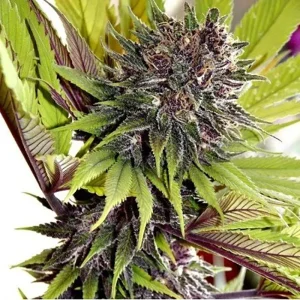
This strain gets its name from a town in Pakistan that is famous for producing some of the region’s best cannabis. Pakistani Chitral Kush is a pure indica strain, but it’s considered a landrace. This means that it’s a strain that has been inbred selectively so that the resultant plant has incredibly enhanced characteristics.
Pakistani Chitral Kush is known to emit an incredibly diverse bouquet of aromatic scents. These typically range from deep earthy caramel to sweet, fruity, or berry-like notes. You can expect an intense body high and powerful sense of relaxation from this bud and can use it to minimize pain and anxiety, and to achieve the ultimate state of sleep.
This is an incredibly colorful strain; even the leaves are a deep purple closer to the buds. Pakistani Chitral Kush is such a beautiful strain that it practically belongs on a constable or shelf as a centerpiece, and what a centerpiece it is. Because of its deep and entrancing colors and its height, there really is no way to go wrong in terms of bonsai styles.
Blue Dream
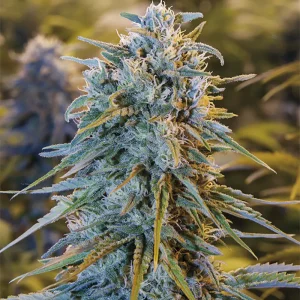
Blue Dream is a hybrid strain dominant in sativa. This strain is created by breeding Blueberry and Haze together. In terms of flavor and aroma, you can expect Blue Dream to have a decidedly sweet berry-like profile with a potent but balanced high.
Blue Dream is known for its potent head high. Expect intense cerebral stimulation and a full-body sense of relaxation to rival an indica. Like many other strains, Blue Dream can be used to fight off symptoms of depression and nausea, as well as provide soothing relief from chronic pain.
Blue Dream is a fairly dull plant in terms of the color of its leaves. But when you get to the buds, the plant takes on a cloudy blue hue. Its name is, therefore, perfectly apt, aside from being named for the strains that produce it. I’d use this strain in an upright bonsai style or even a double trunk or forest setup if you have enough saplings to work with.
Jack Herer
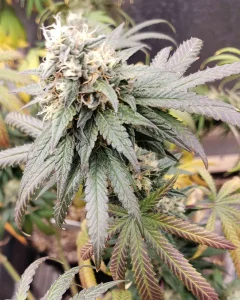
Our last strain is fairly iconic within the cannabis community. Jack Herer was created by Sensi Seeds using a blend of Northern Lights #5, Shiva Skunk, and a good amount of Haze. It was named for the famous writer of The Emperor Wears No Clothes and was created in hopes of capturing the often elusive pure cerebral high.
Jack Herer is known for its almost transcendental effects; a clear-headed, blissful, and creative experience. Hailing from the Netherlands, Jack Herer has taken home many awards for its rich potency, and many Dutch pharmacies actually recognize this as a medical-grade strain.
This strain grows best in Mediterranean climates and boasts a muted, almost grey appearance. The buds carry a muted green with hints of pure silver, and the leaves are often a deep purple right at the extremities. The purple is so subtle on some plants that you’d miss it if you weren’t looking for it specifically. This is another strain that would be well suited to any bonsai style, but its leaves might look the best when cultivated as a take on the weeping bonsai style. The buds won’t weep as weeping trees do, but a skilled bonsai enthusiast can turn any tree into virtually any form.
The Myths Surrounding Cannabis
As much as those of us who have done our due diligence would prefer it not to be the case, there is still so much misinformation on the internet about cannabis. Anyone who has ever tried to find information about this incredible plant has likely had the same experience I did. My first search was maybe a little vague to start off with, but it’s a fairly common way to phrase things you want to know more about; ‘What is cannabis.’ You can imagine what kind of websites popped up when I hit enter. The top search results at the time were the Mayo Clinic, WebMD, and the NHI, among other ‘reputable’ health-centric websites.
My problem with these ‘research-based’ websites is that the research that many of these platforms rely on concerning cannabis is flawed. Ever since the ‘Reefer Madness’ tagline took hold of world media, we’ve been at the receiving end of decades’ worth of anti-marijuana propaganda. If you have enough years alive under your belt, you’ll remember such statements as ‘MARIJUANA: WEED FROM THE DEVIL’S GARDEN!‘ and ‘MARIJUANA: THE SMOKE OF HELL!‘ Yes, these were quite literally printed out in all caps with exclamation points to really drive the propaganda home.
People everywhere would read these and believe them at face value. Let’s not even mention the fact that posters like these refer to cannabis as ‘the smoke of hell,’ somehow implying that not all smoke originates in hell, but cannabis smoke certainly does. This while the powers that be were/ are perfectly content selling cigarettes that contain compounds that are actually detrimental to human health. This isn’t even a fact that companies or the media try to hide. It’s quite clearly printed on every cigarette packet I’ve ever seen.
This anti-marijuana propaganda is always followed or preceded by various fear-mongering tactics designed to make you fear for the lives of anyone smoking cannabis. As someone who has and occasionally does, we’re fine. We’re chill and relatively happy with our choices. I’m not speaking for the entire stoner community here, but on average, people who ‘wake and bake‘ or ‘put on a green sweater’ have been found to have less anxiety and don’t present as often with stress-related health concerns.
In fact, Cannabis is even proposed as a way to get back that youthful spring in your step. This is evidenced by a study that was published in the Journal of Mental Health Policy and Economics, which found that ‘consumers of cannabis have a lower BMI than those who do not use’ cannabis.
Another study published in the American Journal of Medicine in 2013 found that ‘cannabis consumers have 16 percent lower levels of fasting insulin and 17 percent lower insulin resistance levels than non-users.’ The study concluded that there is a ‘significant association between cannabis use and smaller waist circumferences.’
If that isn’t enough, or if you particularly wanted a non-American source of information, similar data was published in the British Medical Journal. A study from 2012 found that cannabis consumers had a ‘lower prevalence of type 2 diabetes and lower risk of contracting the disease than did those with no history of cannabis consumption.
Three incredibly prominent scientific journals, one prevailing finding; Cannabis isn’t the devil’s lettuce after all. My personal opinion is that that distinct honor belongs to kale, but that’s neither here nor there.
One of the chief claims of anyone trying to convince you not to try cannabis and thus preventing your exploration of the wonderful world of cannabonsais, is that the ‘devil’s lettuce’ causes laziness, saps energy, makes you unproductive, and sends your work ethic to hades in a handbasket. The fact, however, is that studies have been done on particular strains of cannabis that suggest certain strains could be beneficial to people suffering from conditions like ADHD.
Then there are the amazing articles coming out all over the world recently with headlines like ‘No, weed does not make you stupid’ and ‘Scientists have found that smoking weed doesn’t lower your IQ after all.’ That’s not me saying that; it’s science. Actual verifiable science that you can look up for yourself; I actually encourage it.
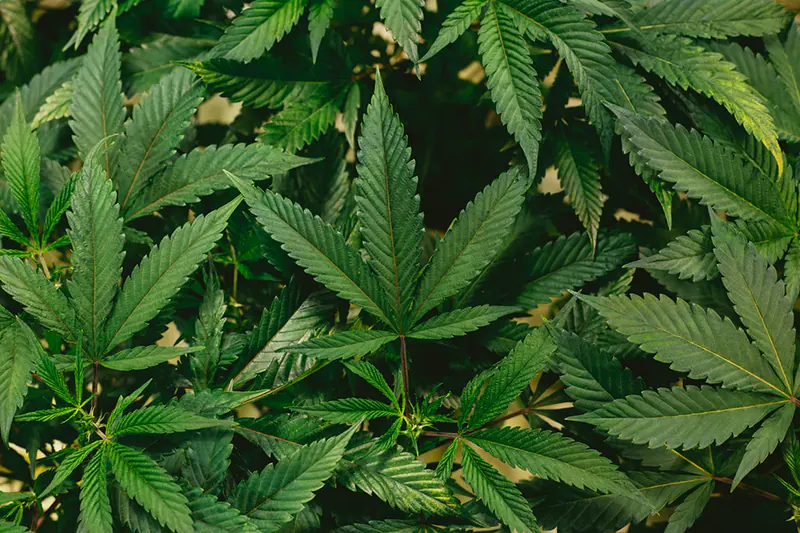
Cannabis and the Human Body
We’ve lightly touched on how cannabis can affect the human body; now, it’s time to discuss why. Previously, we mentioned THC, and we referred to it as the fun compound. THC is the abbreviation for a compound called Delta-9-tetrahydro-cannabinol. Reading through that terminology right there, it makes sense that we most commonly refer to the compound as THC.
Delta-9-tetrahydro-cannabinol just doesn’t roll off the tongue as smoothly as THC does. THC is the compound responsible for the highest percentage of the intoxicating effects that weed has on the human body. What may surprise you is that we have something similar to THC in our bodies already.
Inside your brain, right now, as you’re reading this, you have a class of naturally occurring chemicals called endogenous cannabinoids. We call these endocannabinoids for short. The best-known chemical so far within the human endocrine system is anandamide. This, along with countless other chemicals yet to be fully researched and understood, is part of a system called the Endocannabinoid System, or ECS for short. You don’t necessarily need to know what exactly anandamide is for the purpose of this article, but I encourage you to research it. Learning new things about how the human body works are fun. However, you do need to know what the ECS is and how it works.
Your brain contains billions of nerve cells known as neurons. These neurons communicate with each other by way of chemical messages or neurotransmitters. In order to get things done within your body, neurons need to be stimulated. When a neuron has undergone sufficient stimulation, a neurotransmitter is released into what is known as a synaptic cleft. This is basically just a space between neurons.
The neurotransmitters then basically move through the synaptic cleft and bind to receptors on neighboring neurons. This process generates a signal. This signal allows the information from one neuron to be transmitted to another neuron. It’s like wifi, but deep inside your brain. Everything within you essentially only works because neurons within your brain are transmitting information to either other at all times. Now to the purpose of the ECS.
The ECS regulates neurotransmissions. When postsynaptic neurons are activated, the ECS produces and releases endocannabinoids. These endocannabinoids travel back to the presynaptic neurons and activate cannabinoid receptors. This makes them able to control what happens when the presynaptic neurons are stimulated again.
The general effect of their presence is a significant decrease in certain neurotransmitters like glutamate. These are essential neurotransmitters but in moderation. In simple terms, the ECS system acts as a brake during these synaptic processes, and it slows down certain activities within the neurons. This Endocannabinoid System basically prevents your neurons from firing excessively. This simple action within the synaptic system allows cannabinoids to act as dampers where pain signals are concerned, for instance.
Other signals that cannabinoids within the synaptic system can modulate are those that cause us to feel stressed and anxious. You see, while it’s integral for organisms like us to be able to feel certain stresses so that we can act appropriately to a stressor or situation causing us stress or anxiety, chronic stress can be incredibly harmful. Your body is built to try and protect itself from harm, and deploying cannabinoids is one of the many ways it does this. If it’s not yet clear: ECS = cannabinoids. Cannabinoids = good. Cannabinoids also = THC and cannabis.
Therefore, cannabis = good in moderation. This isn’t a blanket statement. Any considering adding another chemical into their bodies, natural or not, needs to have sufficient information to do so. Make sure that you’re not on any medication that can conflict with the good cannabis can do, and make sure you don’t have a surplus or lack of chemicals within your body that could change the way cannabis reacts. Every situation is different.
It is your responsibility as an adult to make sure you have sufficient information before introducing a new chemical into the delicate ecosystem that is your body.
Another interesting thing about the ECS is that it has a direct hand in your body, prescribing you its very own happy drug; dopamine. This exact mechanic is why you probably feel euphoric or high when you puff puff pass.
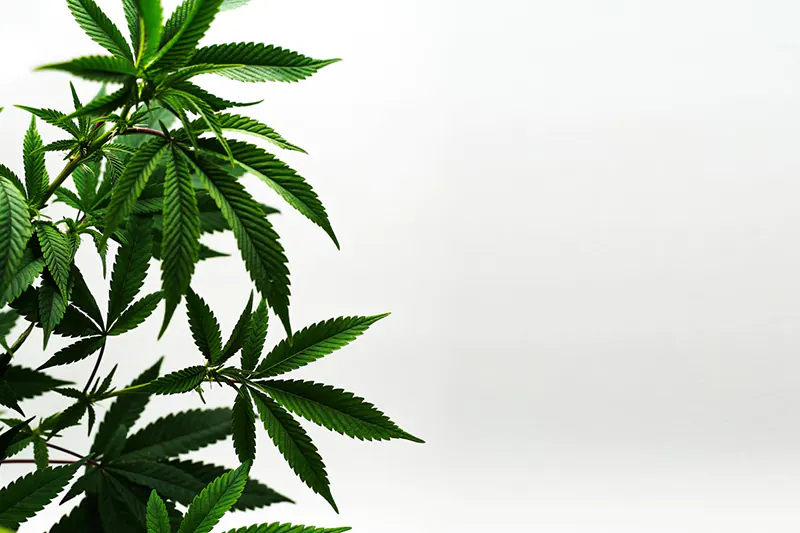
The Benefit of Bonsai
Bonsai is a curious art form. To any untrained eye, the practice merely looks like the intentional miniaturization of trees. But there is so much more than meets the eye behind each cut, slice, bend, and intentional manipulation. Yes, some enthusiasts practice bonsai just for the stunning end product, but more often than not, bonsai is a practice of deep personal contemplation.
Starting with the particular source material, the artist or enthusiast pours hours, weeks, and years’ worth of energy into the cultivation and growth of the perfectly miniaturized tree. It takes a great deal of patience and focus to produce something really spectacular where bonsai is concerned, but the physical tree is more often than not something for the hands to do while the mind unintentionally goes to fascinating places. It isn’t required that you take a deep look inside yourself when you take up bonsai, but it’s what happens a lot of the time in any case.
However, something else is likely to happen when you first start exploring bonsai; Happiness. Bonsai, in the modern sense, is a popular way to incorporate nature into the harsh, cold cityscapes that many of us call home. There are myriad reasons why a hobby or undertaking like bonsai can elevate your mood, but the most universally understood reason is that humans love nature.
Multiple studies exploring the relationship humankind has with nature have found that contact with nature generally helps us feel happier, more focused, and better about our place in the universe. According to psychology, the core reason that we feel this way when out in nature isn’t the vitamin D infusion that we get from the sun, but something much deeper, something that can be directly attributed to growing a miniaturized tree in your apartment.
Psychology suggests the reason we feel so happy in nature is a result of our sense of belonging. Various studies have found that people feel far more connected to something greater than themselves when immersed in or observing nature. We feel closer to whichever creator-force we subscribe to or believe in. Bonsai takes this to another level in that we become the creators. We are able to shape nature to our liking, taking part in an incredible spiritual sculptural movement from the most ancient of times.
There are also incredible benefits pertaining to mental health that nature provides. These benefits can often be harnessed through the practice of bonsai as well. With all this in mind, cannabis is the perfect plant to explore bonsai through. Even though you wouldn’t be getting much out of the plant in terms of product, you’d be getting an incredible infusion of happiness from the simple act of cultivating a bonsai, with the added benefits of the stress relief, pain relief, and general mood improvement that moderated amounts of cannabis are known to provide.
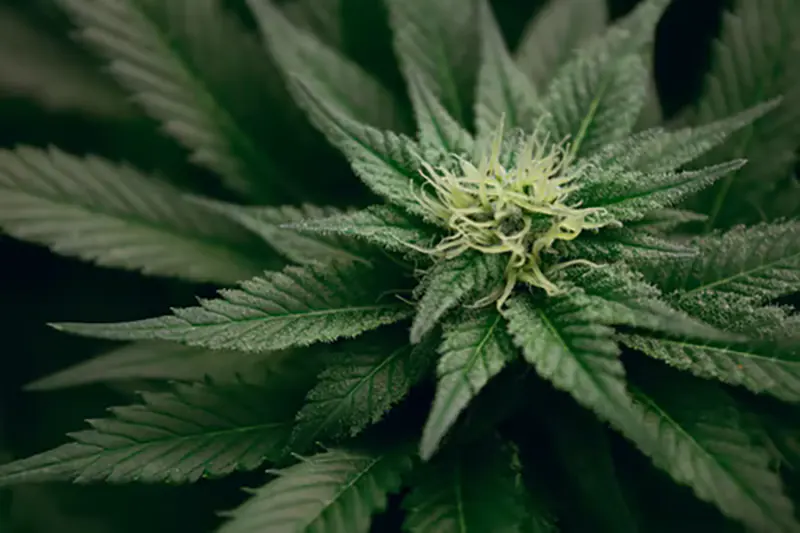
Final Word
Weed is taking over the world. In the best ways, though. We’re living in a time where more and more countries and regions are listening to the actual experts who have been studying and growing this miracle plant for decades, and the establishment is finally starting to recognize it as an asset. There are so many good things about cannabis, even outside of the usual uses.
The sheer variety of cannabis plants in existence is a testament to mankind’s pursuit of happiness, bliss, and contentment. The majority of the strains that exist today have been expressly cultivated for a specific purpose, such as relieving stress and anxiety or even helping patients suffering from insomnia to sleep better.
We hope that you’ve learned a little more about the benefits and truth of cannabis and that you make the conscious choice to research everything you hear. All of the information about all the good that this plant can do is out there, somewhere. All you have to do is find it. Cannabis and bonsai are a match made wherever bliss, relaxation, and harmony reside, and it would be a benefit to cultivate this plant, discover more about it, and make sure that that information survives for the next generations.
You don’t even have to smoke this plant to reap its many benefits. The same euphoria, bliss, and contentment that stoners feel can be felt by simply picking up pruning scissors and shaping a cannabis plant to your will. Bathe in its energy and inject your own into it. At the end of the day, you’ll have a stunning, vibrant, unique bonsai and a few grams of premium, homegrown cush.







